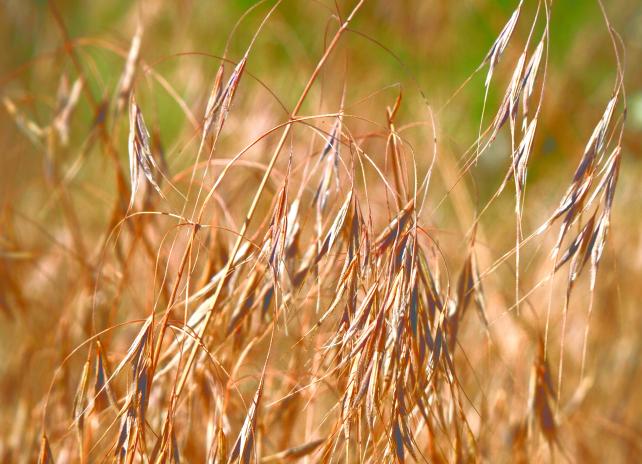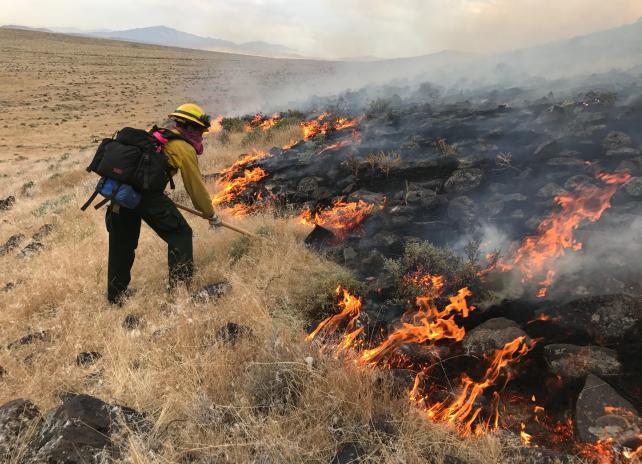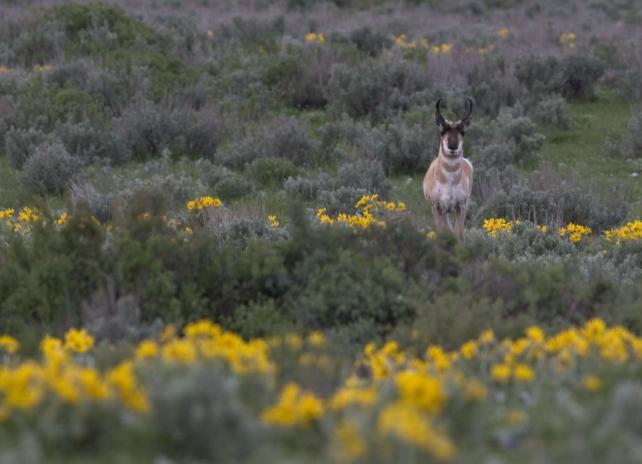Grazing Management
Wyoming's grazing lands are incredibly important wildlife habitat. There are 27.5 million acres of grazed rangeland in Wyoming. Grazing systems are designed to benefit livestock, and if designed properly, they can also benefit wildlife that are present or desire to be present. In general, poor grazing management negatively affects wildlife, plants, and soil, as well as livestock weight gains and production. Good grazing management provides a sustainable system that promotes optimal growth and care of the forage resource.
Prescribed Burning
The Wyoming Guidelines for Managing Sagebrush Communities with Emphasis on Fire Management, has recently been completed through a cooperative effort by representatives from the Wyoming Game and Fish Department, Bureau of Land Management, U.S. Forest Service, and Natural Resource Conservation Service.
Invasive Species
Cheatgrass - downy brome
The annual grass cheatgrass (Bromus tectorum L.)—or downy brome—is one of the most significant invasive weeds in the western United States because it reduces forage quantity and quality, alters wildfire regimes, impacts species diversity, and reduces wildlife habitat.

Cheatgrass Management
In this handbook, we present information that should assist in developing a strategic approach to managing this invasive annual grass. We focus on managing cheatgrass in rangelands and natural areas.

when to stay away
The Wyoming Game and Fish Department is committed to finding the appropriate management tools and implementing the appropriate management strategies required to sustain healthy wildlife habitats.
Riparian Information
Riparian areas are lands adjacent to creeks, streams and rivers where water strongly influences vegetation. According to the Wyoming Riparian Association, riparian habitats comprise less than 4 percent of Wyoming’s land area and provide habitat for over 80 percent of all vertebrate species in the state. Riparian systems also provide fish habitat in the form of overhanging vegetation and undercut stream banks. Cooler water temperatures and high-quality water also benefit fish populations.
Improper livestock grazing in these highly productive areas can be detrimental. Degraded riparian areas have little vegetation to protect and stabilize stream banks. This lowers water tables and the saturation zone, thus reducing summer stream flows. Wildlife and fish are greatly reduced, as well as livestock forage amount and quality. Other activities also affect riparian areas, such as straightening or diverting sections of the stream channel, operating vehicles or heavy equipment in riparian areas, cultivating to the edge of streams or rivers, removing beaver, and allowing over populations of big game animals.
Riparian Resources
Compendium of Trout Stream Habitat Improvement Projects (1953-1998) (10 MB)
Managing for Beaver on the Bighorn National Forrest
The Response of Prairie Stream Riparian Buffers to Livestock Exclusion
Continuous CRP Riparian Buffer, Stream Restoration Program

